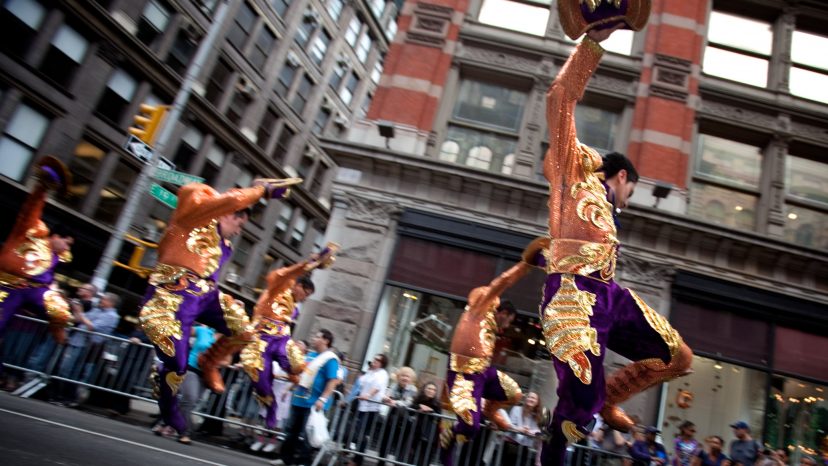Every year, people from around the world showcase cultural dances from all over the world down New York City’s busiest street.
“It’s joy personified,” said one parade-goer.
On May 20, over 10,000 people will perform about 75 different kinds of dances during the 11th annual Dance Parade.
Here are some of our favorites:
The Fiery Flamenco
The Flamenco is a genre of dance from southern Spain (Andalusia)punctuated by a clapping beat and guitar, and sometimes singing as well.
There’s the slow version–cante jondo—with songs about love and loss and death, sad things, really, and quite dramatic.
Then there’s the popular fast version—cante chico—that really lets you show off your dance moves.
In flamenco, dancers have the concept of “duende,” or a spiritual bond between the dancer and audience, driven by the performers’ passion and intent.




The Ubiquitous Tap
Tap dancing is more than just a dance, it’s a style, a genre, a type of music, and highly popularized through films and television.It started with shows and moved to the Vaudeville stage, and then continued living through popular media.
The two major versions are rhythm (or “jazz”) tap, which is tied closely with music with a philosophy like that of free spirited jazz, and Broadway, which is more of a show-performance style.
In tap, you wear shoes with a metal “tap” on the heel and toe, and it’s quite a percussive dance. Tap dancing has African American and English roots, and is believed to have begun in the mid-1800s.


The Sensual Kizomba
Kizomba is a genre of dance from Angola that was popularized in the ’70s, and has since been mixed and adapted in various cultures from Brazil to Estonia. You can recognize it by its insistent, romantic, and sensuous rhythm.
Bollywood
What’s a massive, multi-cultural dance parade without a great, choreographed Bollywood number?
Bollywood dances are generally a mix of folk and formal Indian music and dance both traditional and pop. Older films showcase a lot of their classical dance styles, and some newer films with a more global audience have mixed in trends like Salsa, pop, and even hip-hop. These big dance numbers have been popularized by India’s film industry.
Music and dance are completely crucial in Indian films, and these numbers are used the same way as that of Hollywood musicals—big love confessions, expression of dramatic inner struggles, once-on-a-lifetime confrontations, and so on.
Polynesian Dances
Dances from the Polynesian islands are characterized by quick, rhythmic hip movements, lots of drumming, and sometimes props like flowers, fans, or even spears.
You’ve probably seen a hula at some point, but many of the popular dances are much more dynamic: the Tahitian Ori, the Samoan siva (the dancers toss fire and swords!), or dances of the Maori and Fijan people.
Irish Step
Irish dances are also something that must be included in a world dance list (yes the Riverdance is one of them).
It has its roots in traditional Irish dance and is something of high stakes, international competitions today (after the 1994 Eurovision riverdancing performance, popularity of big productions soared). It’s a bit like tap, and has really intense footwork, but differs from other step and tap dances because the arms are characteristically held down to your sides.


